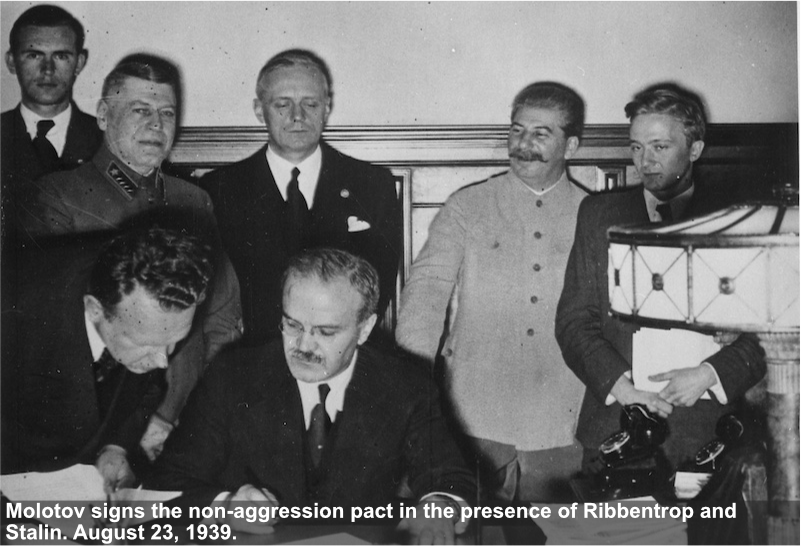The Hitler-Stalin Pact
Episode #2 of the course Ten turning points of World War II by Patrick Allitt
Throughout the 1930s, Hitler’s Germany and Stalin’s Soviet Union were adversaries. One represented the extreme right on the political spectrum; the other represented the extreme left. They supported opposite sides in the Spanish Civil War (1936-1939) and regularly denounced each other. Stalin ordered Communists throughout the world to ally with supporters of democracy, so great did the Nazi menace appear. But suddenly, in August 1939, the two dictators signed a nonaggression pact, astonishing and alarming governments throughout the world.
America had retreated into isolationism after the First World War. Britain and France, traumatized by memories of the brutal trench warfare of 1914-1918, were eager to appease Hitler. Their leaders hoped he would be satisfied by gaining Austria and part of Czechoslovakia and would not provoke another general European convulsion. Stalin suspected that Britain and France were hoping for a Soviet-German war in which the two dictators would both be weakened. The pact, though it made nonsense of both dictators’ ideological postures, was the result.
A week later, on September 1, 1939, German troops invaded Poland. This event triggered a general war in Europe because Britain and France honored their mutual support treaties with Poland. Hitler’s troops overran western Poland and bombed the major cities. Russian troops attacked eastern Poland two weeks later, where they also gained a quick victory over the poorly equipped and incompetently led Poles.
Britain and France mobilized their armies and sent them to the Franco-German border. Had they acted resolutely, overrunning western Germany and forcing Hitler to divert forces from Poland, they might have been able to stop him. Instead, pitifully, they sat and waited at the frontier, giving Hitler all the time he needed to bring his campaign to a successful end. This period is remembered in the English-speaking world as the “Phoney War,” but there was nothing phoney about it to its Polish victims.
Stalin and Hitler followed up the dismemberment of Poland with a trade agreement. Stalin needed manufactured goods and military equipment, especially modern aircraft and warships. Hitler needed the raw materials that Russia could supply in abundance, especially oil, cotton, and food. He remembered the near-starvation of Germany under British naval blockade during World War I, feared that it might happen again, and saw Russia as the ideal supplier, at least for the moment.
During the depression years of the 1930s, young idealists throughout Europe had joined the Communist Party, hoping that it represented a better future than the capitalist system, which to them, seemed doomed. Party membership meant submission to party discipline, however, with the result that Communists were now expected to support the pact and praise Hitler’s Germany. That was more than many of them could stomach, and thousands left the Party in dismay.
Throughout 1940 and the first half of 1941, the pact and the trade agreement remained in force. Those were the years in which Hitler’s armies overran most of western Europe, leaving him confident that supplies were flowing in and that he had nothing to fear from the East. No wonder Britain and America never entirely trusted Stalin, though they later allied with him. He had suddenly joined up with Hitler before—they lived in fear that he might do it again.
If Hitler had not ultimately discarded the pact by invading Russia in the summer of 1941, it’s hard to imagine how he ever would have been defeated.
Tomorrow, we will see how Hitler created a second shock wave by conquering France in just six weeks, a country that had resisted Germany for four years in the First World War. His opportunistic brilliance again caught the Western leaders flat-footed and transformed the world’s balance of power.
Recommended book
The Devils’ Alliance: Hitler’s Pact with Stalin by Roger Moorhouse
Share with friends

